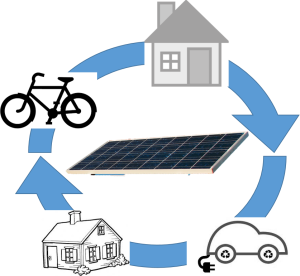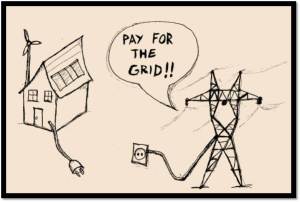I strongly support the democratization of energy, understood as the access to energy for all and the open participation of the people in the energy market, for example by generating energy for self-consumption or through energy cooperatives. (I already posted on this subject here)
I see energy independence is of less importance. Having energy inter-dependencies with other countries may be positive. As an example, electric grid interconnections, even if they meant energy dependence, are built for increased efficiency and optimized use of generation assets. Increasing the interconnection of France and Spain, would increase competition and efficiency, although it could lead to greater inter-dependence. How about islands interconnections? That makes them dependent on the mainland, but energy less costly, more reliable and allowing greater renewable penetration.
Democratization gives an additional momentum to any change, with this I mean, once some technology market is democratized, accessible to all, and each individual can invest in it, the speed of it’s implementation and development is exponential. An example that anyone can understand is the development of apps for mobile devices.
In the energy industry, the democratization of power generation is mainly due to solar power. Germany has built more than 30 GW of solar power plants, thanks to individuals and cooperatives, not concentrated by traditional big utilities and concentrated power plants, now more decentralized.
On this subject, in wrote an article in
Energética s.XXI for their international edition of July/August 2013
(read it as a pdf). Individuals not only can have important effects on the grid, they have also have the responsibility to act with sustainability and energy efficiency.
Smart grids have brought the prosumer, as part of a more democratized system where the consumer can also be a producer of energy and participate in the energy market. Building rehabilitation, making homes prosumer microgrids increases the efficiency, the reliability, the sustainability, the security of supply and is also has a very good return on investment. (An example I also wrote about is the V2H business case, part of these home microgrids)
A widespread implementation of smart homes as microgrids would build a smart grid, from the bottom up, from where the energy is consumed, but with effects on the whole grid and energy landscape.



 In this portion, corresponding to one building alone, you have around 25 units.
In this portion, corresponding to one building alone, you have around 25 units.




![Ulm church bottom up (tallest church in the world, built by the citizens of Ulm), by Szeder László (Own work) [GFDL (http://www.gnu.org/copyleft/fdl.html) or CC-BY-SA-4.0-3.0-2.5-2.0-1.0 (http://creativecommons.org/licenses/by-sa/4.0-3.0-2.5-2.0-1.0)], via Wikimedia Commons](https://carlosdepalacio.files.wordpress.com/2013/08/d-ul-ulm05.jpg?w=231&h=308)
